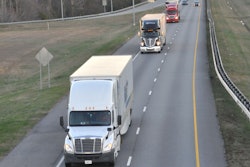The American Trucking Associations on Wednesday asserted that the gap between the number of available, qualified drivers and the number of drivers needed by fleets is widening. The ATA report forecasts what it considers a “driver shortage” will reach 160,000 by 2028, if current trends continue.
ATA estimates there will be a driver shortfall of 59,500 this year, down slightly from its estimate of 60,800 for 2018, but well above the 2017 estimate of 50,700.
The estimates of the shortage are based on “simply the difference between the number of drivers needed to move the amount of freight that is out there and the supply of drivers,” says Bob Costello, ATA chief economist. He says the driver shortfall is isolated mostly to the long-haul, over-the-road segment.
The U.S. Department of Labor’s Bureau of Labor Statistics this year published a report questioning the efficacy of the widely accepted notion that there’s a shortage of truck drivers. Overdrive coverage of the issue has likewise found other ways of interpreting the supply and demand for drivers in light of pay trends and other factors.
ATA’s “Truck Driver Shortage Analysis 2019” report cites an aging driver pool, regulations, the tough lifestyle of the driving job and an inability to attract female drivers to the industry as key reasons for the lingering “driver shortage.” Also cited are other blue collar job options, such as available jobs in the construction industry, and restrictive regulations like hours of service.

ATA advocates for driver pay increases, more at-home time for drivers and lowering the interstate driver age to 18 as primary courses of action for mitigating the shortage. Transitioning military personnel to trucking careers and working to alleviate dwell times at shippers and receivers can also help mitigate the perceived shortage, ATA says.
In the long-term, ATA argues automated truck features that make the driving job easier could help attract new drivers to the industry. Long-term, “well beyond the dates of this report, one could envision an environment when the longer, line-haul portion of t ruck freight movements are completed by autonomous trucks,” ATA says in its report. But “motor carriers should not count on this being an option for many decades.”









